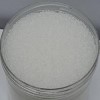Polyvinyl Acetate Manufacturer Exporter BP Ph Eur USP NF FCC Food Grade Manufacturer Exporter
Crystal Clear Products is a manufacturer exporter company manufacturing several chemicals including Polyvinyl Acetate and IP BP Ph Eur USP NF JP ACS AR Analytical Reagent FCC Food Grade, Pharmaceutical Chemicals at best prices. The group has offices and factories in India USA and UAE and toll manufacturers in China and sells to almost every country in the world.
The manufacturing facilities of our partner manufacturers have one or more of FDA-cGMP-GLP certification, ISO-9001 certification, Halal and/or Kosher certification, REACH pre-registration ISO-22000 HACCP. We also allow third party inspection of products offered. We can offer small quantities from laboratory and trial packs to large shipments of container loads of material.
Hazard Statements:
Not a hazardous substance or mixture according to Regulation (EC) No. 1272/2008.
This substance is not classified as dangerous according to Directive 67/548/EEC.
Not considered hazardous by the OSHA Hazard Communication Standard (29 CFR 1910.1200)
Signal Word: None
Transport Information
DOT USA, TDG Canada & ADR/RID Europe: Not dangerous goods.
IMO/IMDG: Not dangerous goods.
IATA/ICAO: Not dangerous goods.
You may please visit:
Polyvinyl Acetate SDS of Manufacturers
Polyvinyl Acetate IP BP Ph Eur USP NF FCC Food AR ACS Reagent Grade Manufacturers

CAS Number 9003-20-7 Polyvinyl Acetate, Molecular Weight: Varies, Chemical Formula: [CH2CH(O2CCH3)]n
Specifications of Polyvinyl Acetate USP NF Grade:
(C4H6O2 )n
Vinyl acetate homopolymer
Vinyl acetate resin --- CAS 9003-20-7.
DEFINITION
Polyvinyl acetate is a thermoplastic polymer, represented by the formula: (C4H6O2 )n in which the value of n lies between approximately 100 and 17,000.
IDENTIFICATION
A. Procedure:
Sample: 100 mg of Polyvinyl Acetate
Analysis: Dissolve the Sample in 2.5 mL of acetone, place two drops on a potassium bromide plate, and dry to evaporate the solvent.
Acceptance criteria: IR absorption spectrum.
B. Procedure:
Sample: 0.5 g of Polyvinyl Acetate
Analysis: Saponify the Sample in a mixture of 25.0 mL of 0.5 N alcoholic potassium hydroxide and 25.0 mL of water.
Acceptance criteria: The solution so obtained meets the requirements of the tests for Acetate.
Residue on Ignition: NMT 0.1%
Residual Peroxides:
Sample: 0.85 g of Polyvinyl Acetate
Analysis: Place the Sample in a borosilicate glass flask with a ground-glass neck. Add 10.0 mL of ethyl acetate, and heat under a reflux condenser with constant agitation. Allow to cool. Replace the air in the container with oxygen-free nitrogen and add a solution of 1.0 mL of glacial acetic acid and 0.5 g of sodium iodide in 40.0 mL of water. Shake thoroughly and allow to stand protected from light for 20 min. Titrate with 0.005 N sodium thiosulfate until the yellow color is discharged. Perform a blank titration.
Acceptance criteria: The difference between the titration volumes is not greater than 1.0 mL; and NMT 100 ppm, calculated as hydrogen peroxide, is found.
Limit of Vinyl Acetate: To pass the test.
Fats and Fixed Oils: To pass the test --- The acid value is NMT 0.5.
Fats and Fixed Oils: To pass the test --- The ester value, calculated from the Saponification Value and the Acid Value, is between 615 and 675.
Loss on Drying: Dry 1.5 g at 100C for 2 h in a vacuum: it loses NMT 1.0% of its weight.
Average Molecular Weight and Molecular Weight Distribution: To pass the test --- The values of weight-average molecular weight and polydispersity are, respectively, NLT 85% and NMT 115% of their respective values as stated on the label.
Poly(vinyl acetate) BP Ph Eur Grade Specifications
DEFINITION
Poly(vinyl acetate) is a thermoplastic polymer obtained by polymerisation of vinyl acetate using a suitable starter, without solvent or with water or 2-propanol. The vast majority of the acetate moieties are attached to non-neighbouring carbon atoms of the chain. The index n is about 100 - 17 000. The relative molecular mass lies between 10 000 and 1500 000. The viscosity is 4 to 250 mPas. The ester value, which characterises the degree of hydrolysis, is 615 to 675.
CHARACTERS
Appearance: White or almost white powder or colourless granules or beads.
Solubility: Practically insoluble in water, freely soluble in ethyl acetate, soluble in alcohol. It is hygroscopic and swells in water. It softens at temperatures above 40-50C.
IDENTIFICATION
A. Infrared absorption spectrophotometry. To pass the test.
B. It complies with the test for viscosity (see Tests).
C. Saponify 0.500 g in a mixture of 25.0 ml of 0.5 M alcoholic potassium hydroxide and25.0 ml of water. The solution obtained gives the reaction of acetates.
TESTS
Solution S: Suspend 50.0 g in 100 ml of ethyl acetate R in a borosilicate glass flask with a ground-glass neck. Heat under a reflux condenser with constant stirring for 30 min. Allow to cool. Filter through a tared sintered glass filter (16) (2.1.2) and wash the residue with 50.0 ml of ethyl acetate, pour the filtrate into a 250 ml graduated flask. Dilute to 250 ml with ethyl acetate.
Appearance of solution: Solution S is clear and colourless.
Viscosity: 85 per cent to 115 per cent of the value stated on the label.
Determine the viscosity immediately after preparation of solution S at 20± 0.1C by using a rolling ball viscosimeter.
Acid value: Maximum 2.0, determined on 5.0 g dissolved in 50 ml of alcohol by shaking for 3 h.
Ester value: 615 to 675.
Saponify 0.500 g in a mixture of 25.0 ml of 0.5 M alcoholic potassium hydroxide and 25.0 ml of water.
Residual peroxides: Maximum 100 ppm, calculated as hydrogen peroxide.
Vinyl acetate: maximum 0.3 per cent to meet the test.
Heavy metals: Maximum 10 ppm.
Loss on drying: Maximum 1.0 per cent, determined on 1.000 g by drying in an oven at 105C.
Sulphated ash: Maximum 0.1 per cent, determined on 1.0 g.
Polyvinyl Acetate FCC Food Grade Specifications
CAS 9003-20-7
DESCRIPTION
Polyvinyl Acetate occurs as a clear, water white to pale yellow, solid resin. It is prepared by the polymerization of vinyl acetate. After completion of polymerization, the resin is freed of traces of residual catalyst (usually a peroxide), monomer, and/or solvent by vacuum drying, steam sparging, washing, or any combination of these treatments. The resin is soluble in acetone, but it is insoluble in water.
REQUIREMENTS
Identification: The infrared absorption spectrum of a melted sample on a potassium bromide plate exhibits relative maxima at the same wavelengths as those of a typical spectrum as shown in the section on Infrared Spectra, using the same test conditions as specified therein.
Free Acetic Acid: Not more than 0.05%.
Lead: Not more than 3 mg/kg.
Loss on Drying: Not more than 1.0%.
Molecular Weight: Not less than 2000.
Contact for Monograph, Uses, Matnfacturing Process, etc of Polyvinyl Acetate and JP IP BP Ph Eur USP NF FCC Food AR ACS Reagent Grade Manufacturer Supplier Exporter
MANUFACTURER EXPORTER
MUMBAI 400009, INDIA. TEL: (OFFICE) 91-9322665100
info@manufacturerexporter.com
Copyright and Usual Disclaimer is Applicable
Last updated
11/19/2022
Manufacturer Suppliers Exporters at Wholesale Prices from India USA and around the Globe
Glacial Acetic Acid -- Aluminum Glycinate or Dihydroxy Aluminium Aminoacetate -- Calcium Acetate -- Cobalt Acetate -- Chromium Acetate -- Magnesium Acetate -- Phenylmercuric Acetate -- Potassium Acetate -- Sodium Acetate Trihydrate Anhydrous -- Sodium Acetate IP BP USP ACS AR Analytical Reagent FCC Food Grade -- Sodium Diacetate -- Strontium Acetate -- Sucrose Acetate Isobutyrate --
Polyvinyl Alcohol -- Polyvinyl Acetate -- Polysorbate 80 -- Poloxamer --






